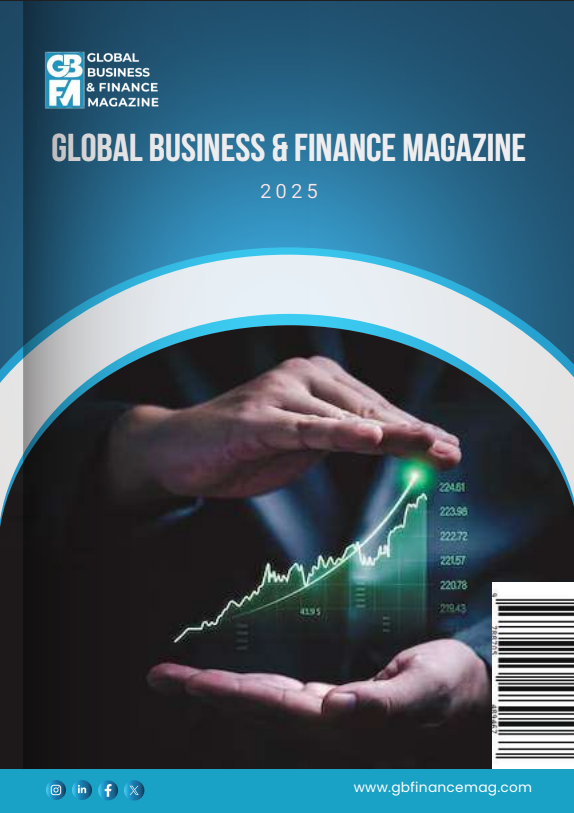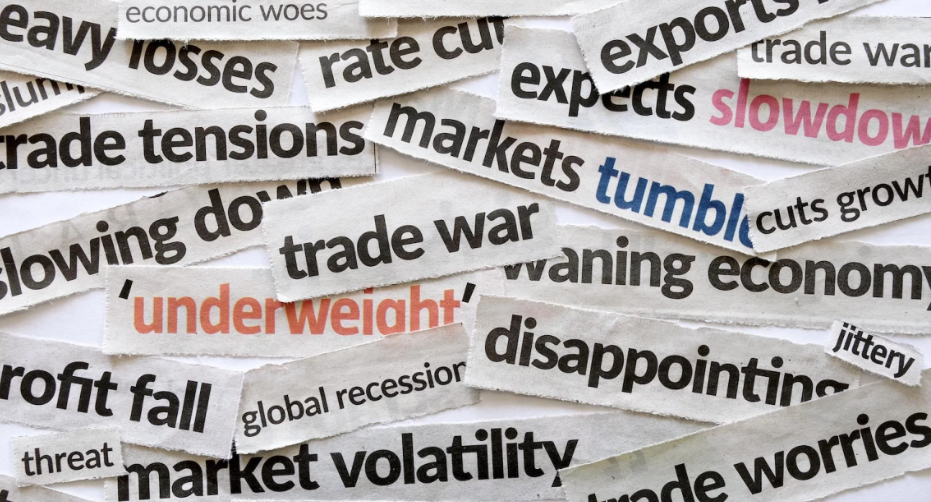On 2 April 2025, the US administration triggered a global shock by announcing sweeping new tariffs. This column describes how what began as a trade policy move evolved into a financial event. The shock activated a financial amplification loop – a self-reinforcing cycle of asset price declines, margin calls, and deleveraging. In order to stop the amplification mechanism, a clear policy backstop needs to be in place. The partial reversal of the original tariff shock seems to offer a temporary resolution, but it is likely that uncertainty about such a policy backstop will persist.
Figure 1 illustrates the sharp swings in financial markets over the past ten days, driven by a series of key developments:
- 2 April: Announcement of sweeping new tariffs by President Trump.
- 4 April: China announces retaliatory measures; Fed Chair Powell signals concern over inflation persistence in a televised interview.
- 7 April: Market speculation emerges regarding a potential tariff moratorium.
- 9 April: Partial reversal of the US tariff policy is confirmed, with exemptions granted to most trade partners – except China.
Figure 1 Market reactions to the April 2025 trade events


Source: Reuters Eikom.
In this column, I focus on the 10-year US Treasury yield (a general proxy for safe-haven demand), the VIX index as a measure of market fear and volatility, the S&P 500 to capture equity market behaviour, and the CDX NA Investment Grade index to reflect credit spreads and perceived risk in high-grade corporate debt.
From trade policy to financial unwinding
Early in April 2025, the US administration triggered a global shock by announcing sweeping new tariffs. These were not symbolic measures – they were broad, sizeable, and unanticipated, with rates between 10% and 50%, applied to nearly all trade partners.
What began as a trade policy move has evolved into a financial event. Equity markets have tumbled. The VIX (a proxy for market volatility) has surged to panic levels, credit spreads have been widening, and Treasuries – usually a safe haven – have shown signs of dysfunction with parallels to the March 2020 situation by swinging by 50 basis points in few hours. The financial stress unleashed by the tariff shock has been real, fast-moving, and systemic.
Why is this happening? Here, I argue that the shock activated a financial amplification loop – a self-reinforcing cycle of asset price declines, margin calls, and deleveraging.
What makes this shock different than the 2018-2019 shock?
In 2018–2019, during the first Trump administration, tariffs were raised in a more targeted way, focusing mainly on China and selected sectors. The traditional textbook case would treat those tariffs as a real-side shock. They raise import prices, affect trade balances, and (in the long run) might shift production patterns.
But when the same policy shock is large, unanticipated, and broad-based, it activates a financial channel as it destabilises financial markets built on leverage and elevated valuations.
This is exactly what makes the current episode different. The tariffs were:
- large, affecting nearly all trade partners and sectors;
- surprising, as they were not anticipated by markets or priced into expectations; and
- systemic, effectively signalling a decoupling of the US from the global trade system.
These three factors – size, surprise, and scope – have forced investors to radically revise their outlook for corporate earnings, productivity growth, and global integration. That reassessment triggered a sell-off. But what transformed it into a financial event is the structure of today’s financial markets.
The financial channel: How the spiral works
For background, entering 2025, equity markets were coming off a period of sustained euphoria, with valuations historically high. Hedge funds, institutions, and even retail investors were heavily exposed to equities, often through borrowed money (margin accounts, derivatives, and structured products).
When asset prices fall, the leverage dynamic kicks in. Here’s the chain:
- Asset prices drop due to lower growth/earnings expectations.
- Investors face margin calls – demands to post more collateral.
- To meet these, they sell assets.
- The selling pushes prices down further.
- More margin calls are triggered.
- The cycle repeats.
This is a mechanical, not a psychological, process. It’s how financial markets react to shocks when leverage is high.
Kindleberger meets tariffs
This progression follows the classic Kindleberger–Minsky framework of financial instability:
- Displacement: The initiating shock – reciprocal tariffs – is large and unexpected.
- Reassessment: Markets adjust earnings and growth expectations.
- Price declines: High-growth sectors (AI, manufacturing) lead the sell-off.
- Margin stress: Leveraged investors are hit with collateral demands.
- Deleveraging spiral: Forced selling accelerates declines.
- Contagion: Credit spreads rise, liquidity dries up, risk appetite collapses.
What is missing in the classic Kindleberger–Minsky framework is the last step: a backstop policy intervention – the mechanism that halts the crisis. Each stage in the cycle reinforces the next, creating a self-sustaining spiral. Without a credible policy backstop – a financial ‘put’ – the system risks sliding further into instability.
Inflation or deflation? The misreading of tariffs
The current perspective is to see tariffs as inflationary: they raise import prices, reduce supply, and increase costs. But this view misses the aforementioned financial channel. When implemented during financial fragility, large-scale tariffs could have the opposite effect:
- They depress earnings expectations
- They erode asset valuations
- They trigger financial deleveraging
- They tighten credit conditions
In this environment, the net effect is financially deflationary. Not because tariffs lower prices, but because they crush aggregate demand through falling wealth and rising financial stress.
The R** perspective: Financial fragility and interest rates
One way to frame this is through the lens of R**, a concept that my coauthors Ozge Akinci, Marco Del Negro, Albert Queralto and I developed a few years ago (Akinci et al. 2023). R** is the financial instability-adjusted real interest rate. As a brief introduction, this concept is different from the popular R* associated with the concept of macroeconomic stability. R** signals the relative stance of the current real interest rate in relation to the financial stability dimension. When R** drops relative to current real interest rates, this means that the economy is entering a state of financial stress.
So how can we use this framework to interpret the current dynamic?
Figure 2 The R** loop


A simple characterisation links R** to the valuation of risky assets and credit spreads along with the supply of liquidity in the system. In the case of a tariff shock, as asset prices fall and credit spreads widen, R** declines. Our framework would suggest that, as actual interest rates remain above this falling R**, the effect is contractionary: it tightens financial conditions even without rate hikes.
The drop in R** reflects heightened risk aversion, deleveraging pressure, and rising liquidity demand. Monitoring high-frequency proxies for R** is one way to assess the severity of the shock.
What could stop the financial channel?
In general, in order to stop the amplification mechanism there is the need for a clear backstop in place. Without a policy anchor, the deleveraging loop continues.
What’s needed is:
- a central bank ‘put’ or coordinated policy signal to stabilise expectations;
- targeted liquidity support to prevent disorderly unwinds; and
- a reversal of trade policy or negotiations that could mitigate the enacted measures and reduce escalation.
In the absence of these, the financial channel will dominate the traditional economic analysis of tariffs.
In the current context, the first signal of a potential policy shift emerged last Monday, when market rumours suggested that the US administration was considering a 90-day moratorium on the tariffs announced on 2 April – applying to all countries except China. Although these rumours were later denied by the White House, they triggered a sharp reversal in financial markets.
Ultimately, on the afternoon of 9 April, President Trump formalised this move, announcing that the tariff increase would apply exclusively to China, with rates raised to 125%. This partial reversal of the original tariff shock merits separate attention, as it effectively signals a deeper strategic decoupling from China. This seems to offer a temporary resolution, but looking forward, it is likely that uncertainty about the policy backstop will persist.
Conclusion: This is a financial event
The 2025 tariff shock must be understood not just as a trade dispute, but as a macro-financial shock in the making. It could be framed within the anatomy of a crisis laid out in the classic Kindleberger framework: a displacement, built on leverage, that triggers a self-reinforcing market unwinding.
The broader lesson? In today’s financialised economy, policy shocks don’t stay in their lane. When delivered at scale, they reverberate through balance sheets, asset prices, and credit conditions.
Source : cepr.org





